SpringBoot基础
Posted 心有玲曦遇奇缘
tags:
篇首语:本文由小常识网(cha138.com)小编为大家整理,主要介绍了SpringBoot基础相关的知识,希望对你有一定的参考价值。

一、SpringBoot简介
1.1 原有Spring优缺点分析
1.1.1 Spring的优点分析
Spring是Java企业版(Java Enterprise Edition,JEE,也称J2EE)的轻量级代替品。无需开发重量级的Enterprise JavaBean(EJB),Spring为企业级Java开发提供了一种相对简单的方法,通过依赖注入和面向切面编程,用简单的Java对象(Plain Old Java Object,POJO)实现了EJB的功能。
1.1.2 Spring的缺点分析
虽然Spring的组件代码是轻量级的,但它的配置却是重量级的。一开始,Spring用XML配置,而且是很多XML配置。Spring 2.5引入了基于注解的组件扫描,这消除了大量针对应用程序自身组件的显式XML配置。Spring 3.0引入了基于Java的配置,这是一种类型安全的可重构配置方式,可以代替XML。所有这些配置都代表了开发时的损耗。因为在思考Spring特性配置和解决业务问题之间需要进行思维切换,所以编写配置挤占了编写应用程序逻辑的时间。和所有框架一样,Spring实用,但与此同时它要求的回报也不少。除此之外,项目的依赖管理也是一件耗时耗力的事情。在环境搭建时,需要分析要导入哪些库的坐标,而且还需要分析导入与之有依赖关系的其他库的坐标,一旦选错了依赖的版本,随之而来的不兼容问题就会严重阻碍项目的开发进度。
1.2 SpringBoot的概述
1.2.1 SpringBoot解决上述Spring的缺点
SpringBoot对上述Spring的缺点进行的改善和优化,基于约定优于配置的思想,可以让开发人员不必在配置与逻辑业务之间进行思维的切换,全身心的投入到逻辑业务的代码编写中,从而大大提高了开发的效率,一定程度上缩短
了项目周期。
1.2.2 SpringBoot的特点
为基于Spring的开发提供更快的入门体验
开箱即用,没有代码生成,也无需XML配置。同时也可以修改默认值来满足特定的需求,提供了一些大型项目中常见的非功能性特性,如嵌入式服务器、安全、指标,健康检测、外部配置等,SpringBoot不是对Spring功能上的增强,而是提供了一种快速使用Spring的方式
1.2.3 SpringBoot的核心功能
起步依赖
起步依赖本质上是一个Maven项目对象模型(Project Object Model,POM),定义了对其他库的传递依赖,这些东西加在一起即支持某项功能。简单的说,起步依赖就是将具备某种功能的坐标打包到一起,并提供一些默认的功能。
自动配置
Spring Boot的自动配置是一个运行时(更准确地说,是应用程序启动时)的过程,考虑了众多因素,才决定Spring配置应该用哪个,不该用哪个。该过程是Spring自动完成的。
注意:起步依赖和自动配置的原理剖析会在第三章《SpringBoot原理分析》进行详细讲解
二、SpringBoot快速入门
2.1 代码实现
2.1.1 创建Maven工程
使用idea工具创建一个maven工程,该工程为普通的java工程即可


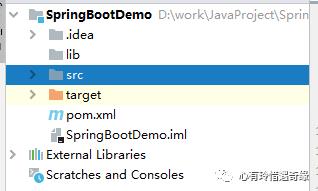
2.1.2 添加SpringBoot的起步依赖
SpringBoot要求,项目要继承SpringBoot的起步依赖spring-boot-starter-parent
<parent> <groupId>org.springframework.boot</groupId> <artifactId>spring-boot-starter-parent</artifactId><version>2.3.1.RELEASE</version> </parent>
SpringBoot要集成SpringMVC进行Controller的开发,所以项目要导入web的启动依赖
<dependencies> <dependency> <groupId>org.springframework.boot</groupId> <artifactId>spring-boot-starter-web</artifactId> </dependency> </dependencies>
2.1.3 编写SpringBoot引导类
要通过SpringBoot提供的引导类起步SpringBoot才可以进行访问
package com.mingqi; import org.springframework.boot.SpringApplication; import org.springframework.boot.autoconfigure.SpringBootApplication; @SpringBootApplication public class MySpringBootApplication { public static void main(String[] args) { SpringApplication.run(MySpringBootApplication.class); } }
在引导类MySpringBootApplication同级包或者子级包中创建QuickStartController
package com.mingqi.controller; import org.springframework.stereotype.Controller; import org.springframework.web.bind.annotation.RequestMapping; import org.springframework.web.bind.annotation.ResponseBody; @Controller public class QuickStartController { @RequestMapping("/quick") @ResponseBody public String quick(){ return "springboot 访问成功!"; } }
2.1.5 测试
执行SpringBoot起步类的主方法,控制台打印日志如下:

tomcat已经起步,端口监听8888,web应用的虚拟工程名称为空
打开浏览器访问url地址为:http://localhost:8888/quick
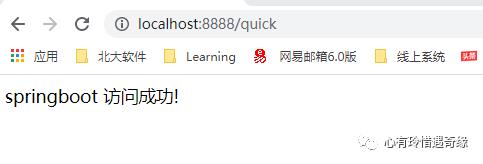
2.2 快速入门解析
2.2.1 SpringBoot代码解析
@SpringBootApplication:标注SpringBoot的启动类,该注解具备多种功能(后面详细剖析)
SpringApplication.run(MySpringBootApplication.class) 代表运行SpringBoot的启动类,参数为SpringBoot 启动类的字节码对象
2.2.2 SpringBoot工程热部署
我们在开发中反复修改类、页面等资源,每次修改后都是需要重新启动才生效,这样每次启动都很麻烦,浪费了大量的时间,我们可以在修改代码后不重启就能生效,在 pom.xml 中添加如下配置就可以实现这样的功能,我们称之为热部署。
<!--热部署配置-->
<dependency>
<groupId>org.springframework.boot</groupId>
<artifactId>spring-boot-devtools</artifactId>
</dependency>
注意:IDEA进行SpringBoot热部署失败原因
出现这种情况,并不是热部署配置问题,其根本原因是因为Intellij IEDA默认情况下不会自动编译,需要对IDEA进行自动编译的设置,如下:

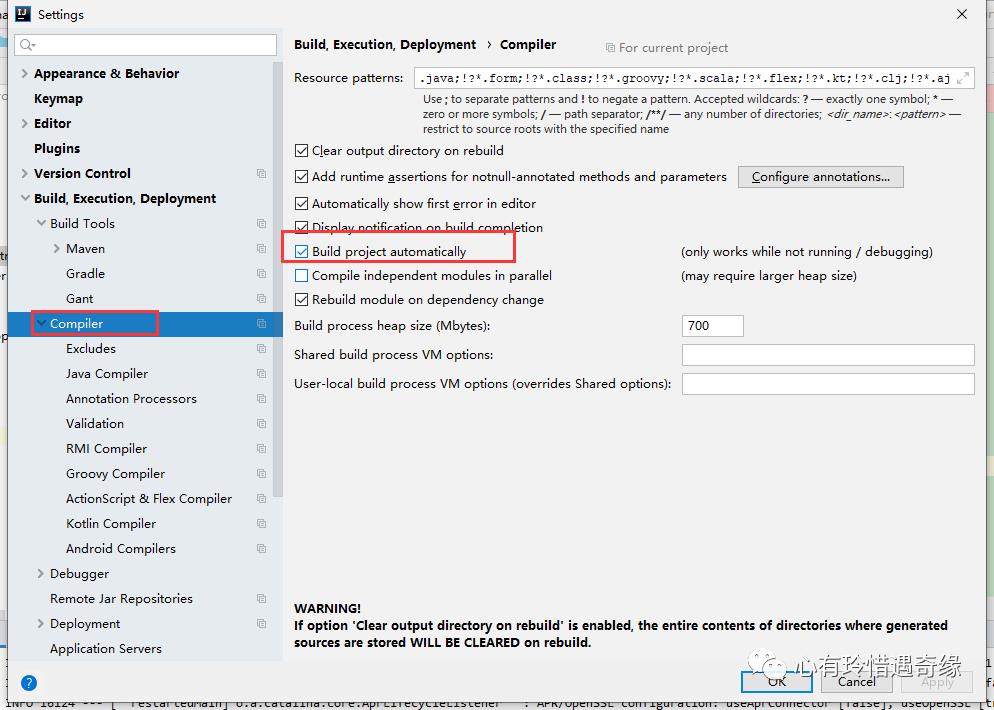
然后 Shift+Ctrl+Alt+/,选择Registry

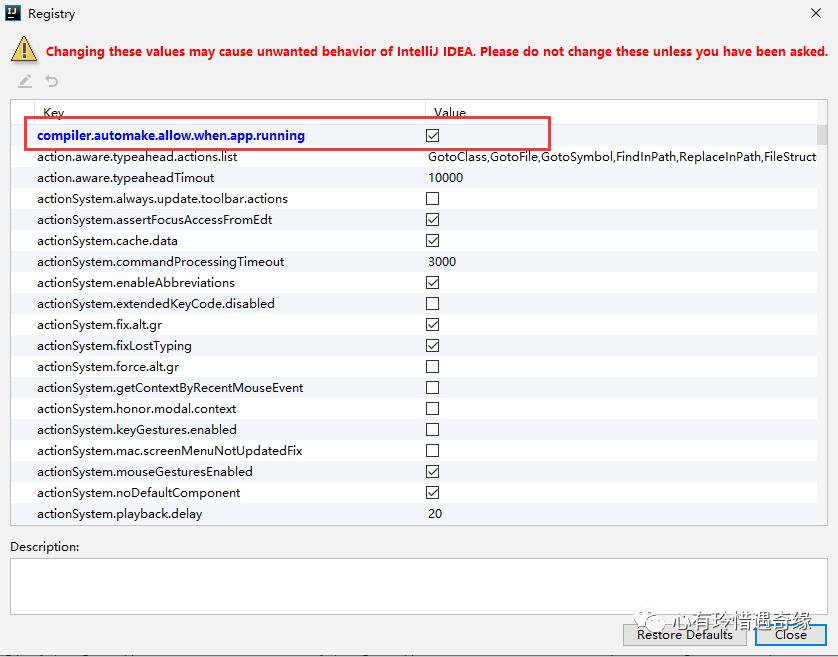
2.2.4 使用idea快速创建SpringBoot项目
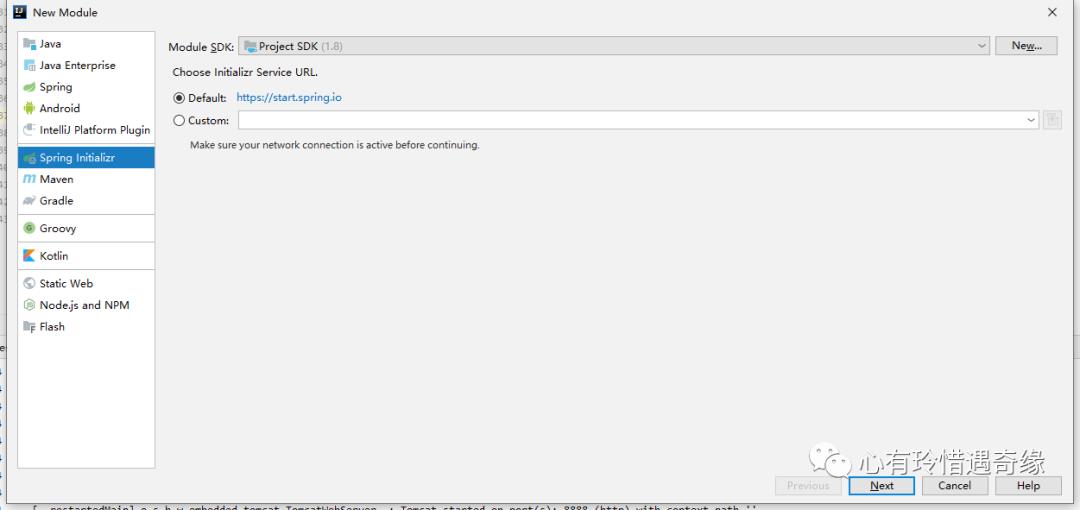
三、SpringBoot原理分析
3.1 起步依赖原理分析
3.1.1 分析spring-boot-starter-parent
按住Ctrl点击pom.xml中的spring-boot-starter-parent,跳转到了spring-boot-starter-parent的pom.xml,xml配
置如下(只摘抄了部分重点配置):
<parent> <groupId>org.springframework.boot</groupId> <artifactId>spring-boot-dependencies</artifactId> <version>2.0.1.RELEASE</version> <relativePath>../../spring-boot-dependencies</relativePath> </parent>
按住Ctrl点击pom.xml中的spring-boot-starter-dependencies,跳转到了spring-boot-starter-dependencies的
pom.xml,xml配置如下(只摘抄了部分重点配置):
<properties> <activemq.version>5.15.3</activemq.version> <antlr2.version>2.7.7</antlr2.version> <appengine-sdk.version>1.9.63</appengine-sdk.version> <artemis.version>2.4.0</artemis.version> <aspectj.version>1.8.13</aspectj.version> <assertj.version>3.9.1</assertj.version> <atomikos.version>4.0.6</atomikos.version> <bitronix.version>2.1.4</bitronix.version> <build-helper-maven-plugin.version>3.0.0</build-helper-maven-plugin.version> <byte-buddy.version>1.7.11</byte-buddy.version> ... ... ... </properties> <dependencyManagement> <dependencies> <dependency> <groupId>org.springframework.boot</groupId> <artifactId>spring-boot</artifactId> <version>2.0.1.RELEASE</version> </dependency> <dependency> <groupId>org.springframework.boot</groupId> <artifactId>spring-boot-test</artifactId> <version>2.0.1.RELEASE</version> </dependency> ... ... ... </dependencies> </dependencyManagement> <build> <pluginManagement> <plugins> <plugin> <groupId>org.jetbrains.kotlin</groupId> <artifactId>kotlin-maven-plugin</artifactId> <version>${kotlin.version}</version> </plugin> <plugin> <groupId>org.jooq</groupId> <artifactId>jooq-codegen-maven</artifactId> <version>${jooq.version}</version> </plugin> <plugin> <groupId>org.springframework.boot</groupId> <artifactId>spring-boot-maven-plugin</artifactId> <version>2.0.1.RELEASE</version> </plugin> ... ... ... </plugins> </pluginManagement> </build>
从上面的spring-boot-starter-dependencies的pom.xml中我们可以发现,一部分坐标的版本、依赖管理、插件管理已经定义好,所以我们的SpringBoot工程继承spring-boot-starter-parent后已经具备版本锁定等配置了。所以起步依赖的作用就是进行依赖的传递。
3.1.2 分析spring-boot-starter-web
按住Ctrl点击pom.xml中的spring-boot-starter-web,跳转到了spring-boot-starter-web的pom.xml,xml配置如下(只摘抄了部分重点配置):
<?xml version="1.0" encoding="UTF-8"?> <project xsi:schemaLocation="http://maven.apache.org/POM/4.0.0 http://maven.apache.org/xsd/maven-4.0.0.xsd" xmlns="http://maven.apache.org/POM/4.0.0" xmlns:xsi="http://www.w3.org/2001/XMLSchema-instance"> <modelVersion>4.0.0</modelVersion> <parent> <groupId>org.springframework.boot</groupId> <artifactId>spring-boot-starters</artifactId> <version>2.0.1.RELEASE</version> </parent> <groupId>org.springframework.boot</groupId> <artifactId>spring-boot-starter-web</artifactId> <version>2.0.1.RELEASE</version> <name>Spring Boot Web Starter</name> <dependencies> <dependency> <groupId>org.springframework.boot</groupId> <artifactId>spring-boot-starter</artifactId> <version>2.0.1.RELEASE</version> <scope>compile</scope> </dependency> <dependency> <groupId>org.springframework.boot</groupId> <artifactId>spring-boot-starter-json</artifactId> <version>2.0.1.RELEASE</version> <scope>compile</scope> </dependency> <dependency> <groupId>org.springframework.boot</groupId> <artifactId>spring-boot-starter-tomcat</artifactId> <version>2.0.1.RELEASE</version> <scope>compile</scope> </dependency> <dependency> <groupId>org.hibernate.validator</groupId> <artifactId>hibernate-validator</artifactId> <version>6.0.9.Final</version> <scope>compile</scope> </dependency> <dependency> <groupId>org.springframework</groupId> <artifactId>spring-web</artifactId> <version>5.0.5.RELEASE</version> <scope>compile</scope> </dependency> <dependency> <groupId>org.springframework</groupId> <artifactId>spring-webmvc</artifactId> <version>5.0.5.RELEASE</version> <scope>compile</scope> </dependency> </dependencies> </project>
从上面的spring-boot-starter-web的pom.xml中我们可以发现,spring-boot-starter-web就是将web开发要使用的
spring-web、spring-webmvc等坐标进行了“打包”,这样我们的工程只要引入spring-boot-starter-web起步依赖的
坐标就可以进行web开发了,同样体现了依赖传递的作用。
3.2 自动配置原理解析
按住Ctrl点击查看启动类MySpringBootApplication上的注解@SpringBootApplication
@SpringBootApplication public class MySpringBootApplication { public static void main(String[] args) { SpringApplication.run(MySpringBootApplication.class); } }
注解@SpringBootApplication的源码
@Target(ElementType.TYPE) @Retention(RetentionPolicy.RUNTIME) @Documented @Inherited @SpringBootConfiguration @EnableAutoConfiguration @ComponentScan(excludeFilters = { @Filter(type = FilterType.CUSTOM, classes = TypeExcludeFilter.class) , @Filter(type = FilterType.CUSTOM, classes = AutoConfigurationExcludeFilter.class) }) public @interface SpringBootApplication { /** * Exclude specific auto-configuration classes such that they will never be applied. * @return the classes to exclude */ @AliasFor(annotation = EnableAutoConfiguration.class) Class<?>[] exclude() default {}; ... ... ... }
其中,@SpringBootConfiguration:等同与@Configuration,既标注该类是Spring的一个配置类,@EnableAutoConfiguration:SpringBoot自动配置功能开启,按住Ctrl点击查看注解@EnableAutoConfiguration
@Target(ElementType.TYPE) @Retention(RetentionPolicy.RUNTIME) @Documented @Inherited @AutoConfigurationPackage @Import(AutoConfigurationImportSelector.class) public @interface EnableAutoConfiguration { ... ... ... }
其中,@Import(AutoConfigurationImportSelector.class) 导入了AutoConfigurationImportSelector类
按住Ctrl点击查看AutoConfigurationImportSelector源码
public String[] selectImports(AnnotationMetadata annotationMetadata) { ... ... ... List<String> configurations = getCandidateConfigurations(annotationMetadata, attributes); configurations = removeDuplicates(configurations); Set<String> exclusions = getExclusions(annotationMetadata, attributes); checkExcludedClasses(configurations, exclusions); configurations.removeAll(exclusions); configurations = filter(configurations, autoConfigurationMetadata); fireAutoConfigurationImportEvents(configurations, exclusions); return StringUtils.toStringArray(configurations); } protected List<String> getCandidateConfigurations(AnnotationMetadata metadata, AnnotationAttributes attributes) { List<String> configurations = SpringFactoriesLoader.loadFactoryNames( getSpringFactoriesLoaderFactoryClass(), getBeanClassLoader()); return configurations; }
其中,SpringFactoriesLoader.loadFactoryNames 方法的作用就是从META-INF/spring.factories文件中读取指定
类对应的类名称列表
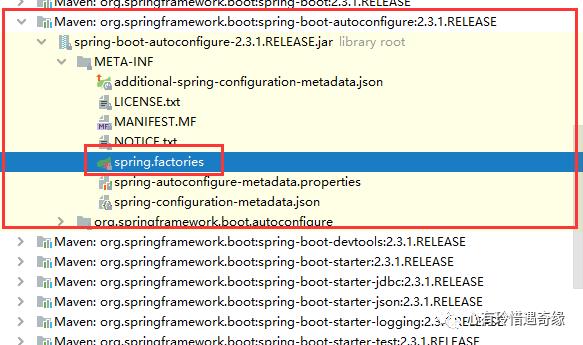
spring.factories 文件中有关自动配置的配置信息如下:
... ... ...
org.springframework.boot.autoconfigure.web.reactive.function.client.WebClientAutoConf
iguration,\\
org.springframework.boot.autoconfigure.web.servlet.DispatcherServletAutoConfiguration
,\\
org.springframework.boot.autoconfigure.web.servlet.ServletWebServerFactoryAutoConfigu
ration,\\
org.springframework.boot.autoconfigure.web.servlet.error.ErrorMvcAutoConfiguration,\\
org.springframework.boot.autoconfigure.web.servlet.HttpEncodingAutoConfiguration,\\
org.springframework.boot.autoconfigure.web.servlet.MultipartAutoConfiguration,\\
.......
上面配置文件存在大量的以Configuration为结尾的类名称,这些类就是存有自动配置信息的类,而SpringApplication在获取这些类名后再加载
我们以ServletWebServerFactoryAutoConfiguration为例来分析源码:
@Configuration @AutoConfigureOrder(Ordered.HIGHEST_PRECEDENCE) @ConditionalOnClass(ServletRequest.class) @ConditionalOnWebApplication(type = Type.SERVLET) @EnableConfigurationProperties(ServerProperties.class) @Import({ ServletWebServerFactoryAutoConfiguration.BeanPostProcessorsRegistrar.class, ServletWebServerFactoryConfiguration.EmbeddedTomcat.class, ServletWebServerFactoryConfiguration.EmbeddedJetty.class, ServletWebServerFactoryConfiguration.EmbeddedUndertow.class }) public class ServletWebServerFactoryAutoConfiguration { ... ... ... }
其中,@EnableConfigurationProperties(ServerProperties.class) 代表加载ServerProperties服务器配置属性类进入ServerProperties.class源码如下:
@ConfigurationProperties(prefix = "server", ignoreUnknownFields = true) public class ServerProperties { /** * Server HTTP port. */ private Integer port; /** * Network address to which the server should bind. */ private InetAddress address; ... ... ... }
其中,prefix = "server" 表示SpringBoot配置文件中的前缀,SpringBoot会将配置文件中以server开始的属性映射到该类的字段中。映射关系如下:

四、SpringBoot的配置文件
4.1 SpringBoot配置文件类型
4.1.1 SpringBoot配置文件类型和作用
SpringBoot是基于约定的,所以很多配置都有默认值,但如果想使用自己的配置替换默认配置的话,就可以使用application.properties或者application.yml(application.yaml)进行配置。SpringBoot默认会从Resources目录下加载application.properties或application.yml(application.yaml)文件,其中,application.properties文件是键值对类型的文件,之前一直在使用,所以此处不在对properties文件的格式进行阐述。除了properties文件外,SpringBoot还可以使用yml文件进行配置,下面对yml文件进行讲解。
4.1.2 application.yml配置文件
4.1.2.1 yml配置文件简介
YML文件格式是YAML (YAML Aint Markup Language)编写的文件格式,YAML是一种直观的能够被电脑识别的的数据数据序列化格式,并且容易被人类阅读,容易和脚本语言交互的,可以被支持YAML库的不同的编程语言程序导入,比如:C/C++, Ruby, Python, Java, Perl, C#, php等。YML文件是以数据为核心的,比传统的xml方式更加简洁。YML文件的扩展名可以使用.yml或者.yaml。
4.1.2.2 yml配置文件的语法
4.1.2.2.1 配置普通数据
语法:key: value
示例代码:
name: limingqi注意:value之前有一个空格
4.1.2.2.2 配置对象数据
语法:
key:
key1: value1
key2: value2
或者:
key: {key1: value1,key2: value2}
示例代码:
person:name: limingqiage: 31addr: 北京
#或者
person: {name: limingqi,age: 31,addr: 北京}
注意:key1前面的空格个数不限定,在yml语法中,相同缩进代表同一个级别
4.1.2.2.2 配置Map数据
同上面的对象写法
4.1.2.2.3 配置数组(List、Set)数据
语法:
key:
- value1
- value2
或者:
key: [value1,value2]
示例代码:
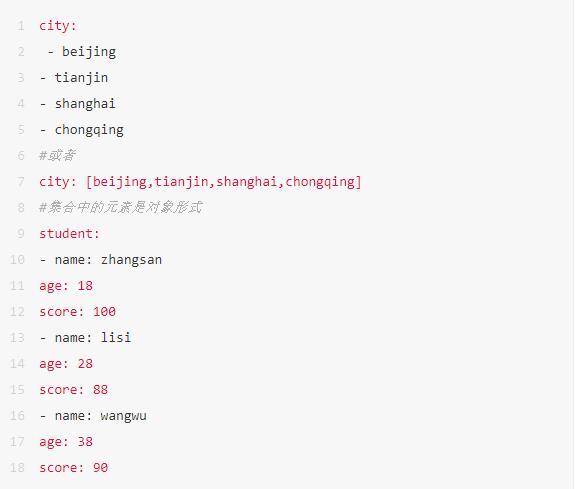
注意:value1与之间的 - 之间存在一个空格
4.1.3 SpringBoot配置信息的查询
上面提及过,SpringBoot的配置文件,主要的目的就是对配置信息进行修改的,但在配置时的key从哪里去查询呢?我们可以查阅SpringBoot的官方文档文档URL:https://docs.spring.io/spring-boot/docs/2.0.1.RELEASE/reference/htmlsingle/#common-applicationproperties常用的配置摘抄如下:
# QUARTZ SCHEDULER (QuartzProperties) spring.quartz.jdbc.initialize-schema=embedded # Database schema initialization mode. spring.quartz.jdbc.schema=classpath:org/quartz/impl/jdbcjobstore/tables_@@platform@@. sql # Path to the SQL file to use to initialize the database schema. spring.quartz.job-store-type=memory # Quartz job store type. spring.quartz.properties.*= # Additional Quartz Scheduler properties. # ---------------------------------------- # WEB PROPERTIES # ---------------------------------------- # EMBEDDED SERVER CONFIGURATION (ServerProperties) server.port=8080 # Server HTTP port. server.servlet.context-path= # Context path of the application. server.servlet.path=/ # Path of the main dispatcher servlet. # HTTP encoding (HttpEncodingProperties) spring.http.encoding.charset=UTF-8 # Charset of HTTP requests and responses. Added to the "Content-Type" header if not set explicitly. # JACKSON (JacksonProperties) spring.jackson.date-format= # Date format string or a fully-qualified date format class name. For instance, `yyyy-MM-dd HH:mm:ss`. # SPRING MVC (WebMvcProperties) spring.mvc.servlet.load-on-startup=-1 # Load on startup priority of the dispatcher servlet. spring.mvc.static-path-pattern=/** # Path pattern used for static resources. spring.mvc.view.prefix= # Spring MVC view prefix. spring.mvc.view.suffix= # Spring MVC view suffix. # DATASOURCE (DataSourceAutoConfiguration & DataSourceProperties) spring.datasource.driver-class-name= # Fully qualified name of the JDBC driver. Autodetected based on the URL by default. spring.datasource.password= # Login password of the database. spring.datasource.url= # JDBC URL of the database. spring.datasource.username= # Login username of the database. # JEST (Elasticsearch HTTP client) (JestProperties) spring.elasticsearch.jest.password= # Login password. spring.elasticsearch.jest.proxy.host= # Proxy host the HTTP client should use. spring.elasticsearch.jest.proxy.port= # Proxy port the HTTP client should use. spring.elasticsearch.jest.read-timeout=3s # Read timeout. spring.elasticsearch.jest.username= # Login username.
我们可以通过配置application.poperties 或者 application.yml 来修改SpringBoot的默认配置
例如:
application.properties文件
server.port=8888server.servlet.context-path=demo
application.yml文件
server:
port: 8888servlet:context-path: /demo
4.2 配置文件与配置类的属性映射方式
4.2.1 使用注解@Value映射
我们可以通过@Value注解将配置文件中的值映射到一个Spring管理的Bean的字段上。例如:application.properties配置如下:
person :
name: limingqiage: 18
或者,application.yml配置如下:
person :
name: limingqi
age: 18
实体Bean代码如下:
@Controller public class QuickStartController { @Value("${person.name}") private String name; @Value("${person.age}") private Integer age; @RequestMapping("/quick") @ResponseBody public String quick(){ return "springboot 访问成功! name="+name+",age="+age; } }
浏览器访问地址:http://localhost:8888/quick 结果如下:
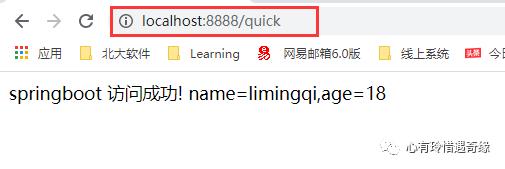
4.2.2 使用注解@ConfigurationProperties映射
通过注解@ConfigurationProperties(prefix="配置文件中的key的前缀")可以将配置文件中的配置自动与实体进行映射application.properties配置如下:
product:id: 我爱的price: 100
或者,application.yml配置如下:
product:id: 我爱的price: 100
//实体Bean代码如下: @Controller @ConfigurationProperties(prefix = "product") public class QuickStartController以上是关于SpringBoot基础的主要内容,如果未能解决你的问题,请参考以下文章